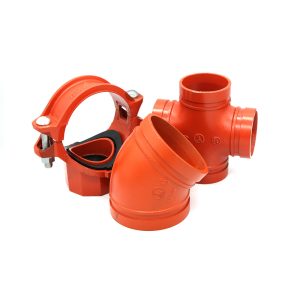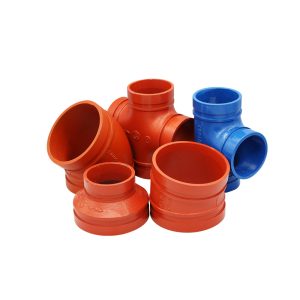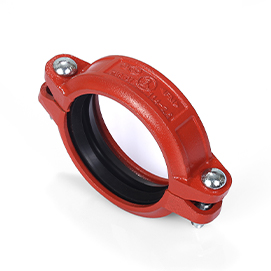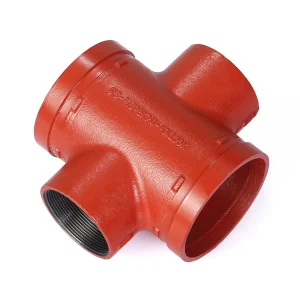
Pipe fitting is super important for plumbing or big systems. Do it right, and everything works great. Mess it up, and you could get leaks or breakdowns. This guide for newbies explains all you need to know about pipe fittings, from kinds to setup.
What Is Pipe Fitting and Why Does It Matter?
Pipe fitting is about putting pipes together so liquids, gases, or other stuff can flow properly in a system. This job makes sure homes, shops, and factories run smoothly and safely.
The Basics of Pipe Fitting
Pipe fitting uses parts like couplings, tees, elbows, flanges, and reducers to join pipes tight. These parts let pipes turn, change size, or split into branches. Good pipe fitters use special tools and tricks to make strong connections that don’t leak and can handle pressure.
Where Pipe Fitting Is Used
Pipe fittings show up in tons of places. In homes, they hook up water lines and drains. In big buildings, they’re in HVAC systems for heat or cool air. They’re also in fire protection systems for safety. Plus, they carry chemicals or gases in factories. Good pipe fitting keeps these systems strong and safe.
How Do You Pick the Right Pipe Fittings?
Choosing the best pipe fittings is super important for a safe and smooth system. You need to think about stuff like materials, sizes, and what the system needs.
Things to Think About When Picking Fittings
Types of Materials and Their Jobs
The material of a fitting decides how tough it is and what it’s good for. Here are some common ones:
- Steel: Super strong for high-pressure jobs.
- PVC: Light and doesn’t rust; great for home plumbing.
- Copper: Awesome for carrying heat; used in heating systems.
- Ductile Iron: Really tough; perfect for big factory jobs. Vicast uses ASTM A536 Grade 65-45-12 for strong Grooved fittings.
Size and Matching
Getting the right size makes sure fittings work with your pipes. Measure the pipe’s width and check the thread type. Matching them up stops leaks or wonky connections.
Mistakes to Skip
Avoiding goofs when picking fittings saves time and money:
- Wrong Pressure Limits: Using fittings that can’t handle the pressure can break the system.
- Ignoring Heat or Cold: Make sure fittings can take the system’s hot or cold temps. Vicast products work from -20°F to +180°F (-29°C to +82°C).
- Bad Material Choices: Picking the wrong material can cause rust or weak spots over time.
What Kinds of Pipe Fittings Are There?
There are lots of pipe fittings for different needs in all sorts of industries.
Common Types of Pipe Fittings
Elbows, Tees, and Couplings
- Elbows: These bend the flow, like at 90° or 45° angles. Vicast’s 11.25° Elbow (XGQT06) is great for exact turns.
- Tees: They split the flow into different paths.
- Couplings: These stick two pipes together tight.
Flanges, Caps, and Reducers
- Flanges: They make a strong link between pipes or gear. Vicast’s Grooved Flange Adaptor (XGQT13) keeps things leak-free.
- Caps: These close off pipe ends for a while or forever.
- Reducers: They change pipe size from big to small or the other way.
How Do You Put Pipe Fittings in Right?
Setting up fittings the right way keeps the system working great and stops problems like leaks or weak pressure.
Tools You Need for Setup
You’ll need these tools:
- Pipe wrenches
- Thread seal tape
- Measuring stuff like calipers
- Cutting tools like saws or pipe cutters
- Grooving machines for Grooved fittings, like Vicast’s products.
Step-by-Step Guide to Setting Up Fittings
- Measure Carefully: Check pipe sizes before cutting or picking fittings.
- Clean Pipes: Wipe off dirt or bits from pipe edges.
- Add Sealant: Put on thread seal tape or pipe goo where needed.
- Join Parts: Screw or attach fittings tight with the right tools.
- Test It Out: Run water or gas through to check for leaks at normal pressure.
Why Pick Vicast as Your Grooved Fittings Supplier?
Vicast’s Love for Quality and Trust
For over 40 years, Vicast has been a big deal in pipe fittings. Their stuff is known for being top-notch and solid. They’ve worked in every part of China, helping build cool projects like the 2008 Beijing Olympic spots. From the Canton Tower to the Guangzhou Convention Center, Vicast’s Grooved fittings make famous buildings even better.
Their care shows in more than just big jobs. They stick to tough material rules like ASTM A536 Grade 65-45-12 and ASTM A395 Grade 65-45-15. This makes sure every product is strong and works great under high pressure or hot and cold temps.
Why Vicast’s Grooved Fittings Are Awesome
Vicast has a huge range of Grooved fittings for stuff like HVAC systems, fire protection, and factory pipelines. Their products are trusty and easy to use, making setup simple while keeping connections tight.
For example, their Grooved Mechanical Tee Threaded (XGQT15S) is a tough way to join pipes. The Grooved Flange Adaptor (XGQT13) gives a strong fit that can handle up to 363 psi. These fittings work in temps from -20°F to +180°F (-29°C to +82°C), so they’re good for tough spots.
Their careful designs last a long time. Whether you need couplings like the Flexible Grooved Coupling (XGOT02), or bends like the 11.25° Elbow (XGQT06) or 22.5° Elbow (XGQT05), Vicast has what you need.
How Do You Keep Pipe Fittings in Good Shape?
Taking care of pipe fittings keeps them working great for years. Regular checks stop leaks, rust, or system flops.
Checking Fittings Often
Looking at fittings a lot helps catch problems early. Check for cracks, rust, or loose parts. Pay extra attention to spots with high pressure. They get more stress.
Make sure fittings match their pressure and temp limits during checks. Vicast’s fittings work great between -20°F to +180°F (-29°C to +82°C).
Cleaning and Greasing Tips
Clean fittings with safe cleaners that don’t hurt the material. For threaded parts, add grease or anti-rust spray to stop rust and keep things moving smooth.
For Grooved fittings like Vicast’s, keep grooves clean before putting them together. This makes a tight seal and stops leaks.
Why Pipe Fittings Are the Future
Pipe fittings are getting more important for all kinds of systems. They’re strong, safe, and fit any job. Vicast leads with cool Grooved fittings that work great in HVAC, fire protection, and more. These show how fittings can keep systems safe anywhere.
As rules for safety get tougher, these fittings fit right in. They make every system work awesome and keep people safe.
Conclusion
Picking the right supplier for pipe fittings is key to a safe and smooth system. Vicast stands out with years of know-how and a solid record in big projects. Their wide range of top Grooved fittings works for all kinds of jobs while following tough world rules. Choose Vicast for trusty, awesome pipe fitting solutions.
FAQs About Pipe Fitting
Q1: How long do pipe fittings last?
A: It depends on the material and how you use them. Good ones like Vicast’s ASTM A536 Grade 65-45-12 fittings can last many years with care.
Q2: Can I use old pipe fittings again?
A: You can, but it’s not always a good idea. Check them for damage or wear first. For important systems, new fittings are safer.
Q3: How do I know if I need Grooved fittings?
A: Grooved fittings are great for systems that need fast setup or takedown without welding. They’re common in HVAC and fire protection.










